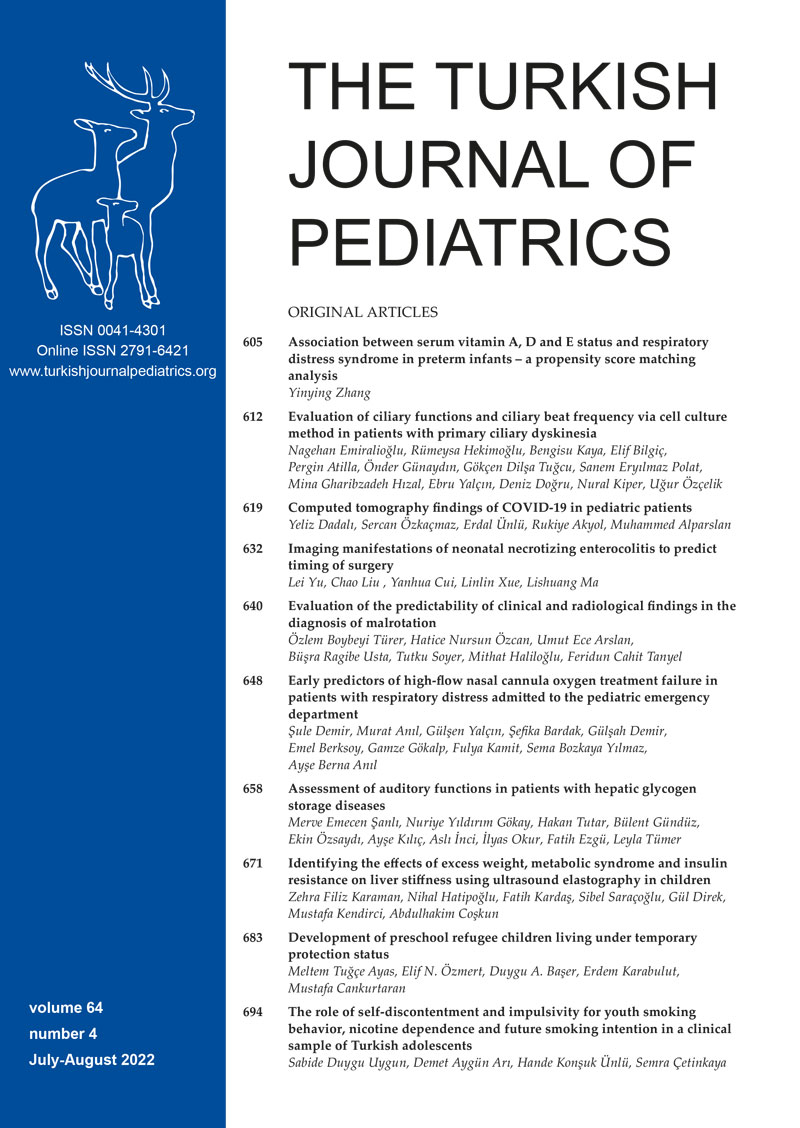Abstract
Background. Cell culture increases both diagnostic specificity and sensitivity of primary ciliary dyskinesia (PCD) and the most important reason to use cell culture for definitive diagnosis in PCD is to exclude secondary ciliary defects. Here we aimed to evaluate the cilia functions and cilia ultrastructural abnormalities after ciliogenesis of cell culture in patients with definitive diagnosis of PCD. We also aimed to compare high speed videomicroscopy (HSVM) results of patients before and after ciliogenesis and to compare them with electron microscopy, genetic and immunofluorescence results in patients with positive diagnosis of PCD.
Methods. This study was conducted as a cross-sectional study in patients with PCD. HSVM, transmission electron microscopy (TEM) and immunofluorescence staining results of the nasal biopsy samples taken from patients with the definitive diagnosis of PCD were evaluated and HSVM findings before and after cell culture were described.
Results. Ciliogenesis and regrowth in the cell culture occurred in the nasal biopsy sample of eight patients with PCD. The mean age of the patients was 15.5±4.2 years (8.5-18 years). Mean beat frequency was found to be 7.54±1.01 hz (6.53-9.45 hz) before cell culture, and 7.36±0.86 hz (6.02-7.99 hz) after cell culture in the nasal biopsy of patients. There was no significant difference in the beat frequency of PCD patients before and after cell culture. Ciliary function analysis showed the similar beating pattern before and after cell culture in patients with PCD.
Conclusions. This study showed us that there was no difference between cilia beat frequency and beat pattern before and after cell culture in patients with definitive diagnosis of PCD and repeated HSVM would be a useful diagnostic approach in patients who have no possibility to reach other diagnostic methods.
Keywords: cell culture, cilia function analysis, high speed videomicroscopy, primary ciliary dyskinesia
Copyright and license
Copyright © 2022 The Author(s). This is an open access article distributed under the Creative Commons Attribution License (CC BY), which permits unrestricted use, distribution, and reproduction in any medium or format, provided the original work is properly cited.














